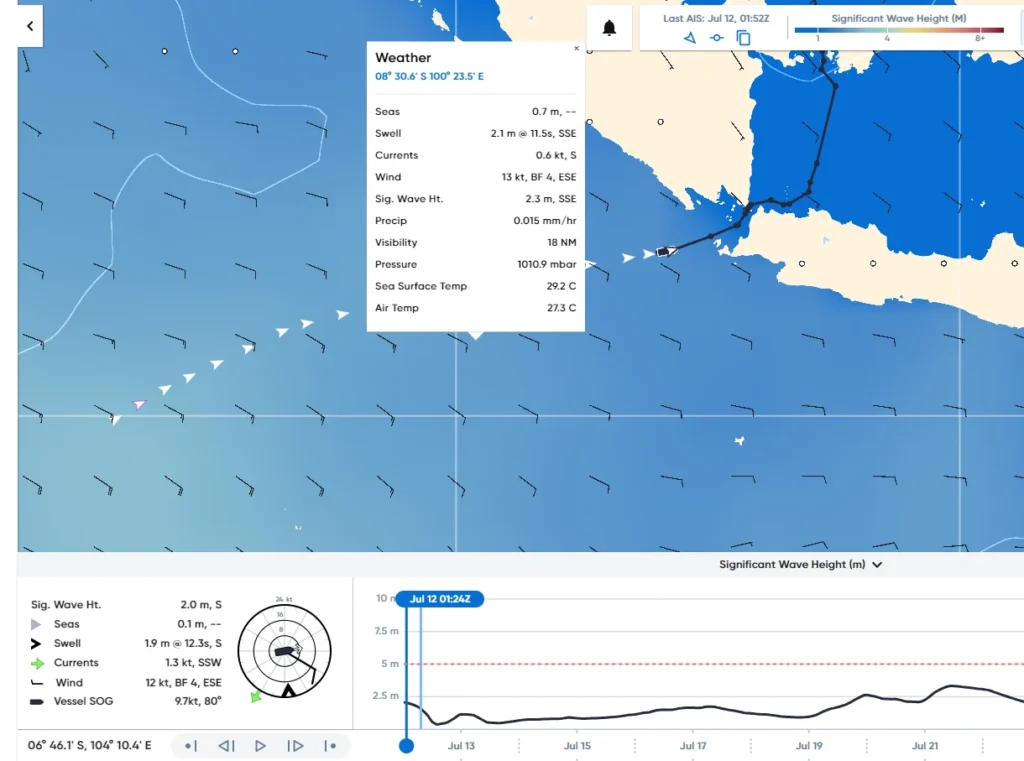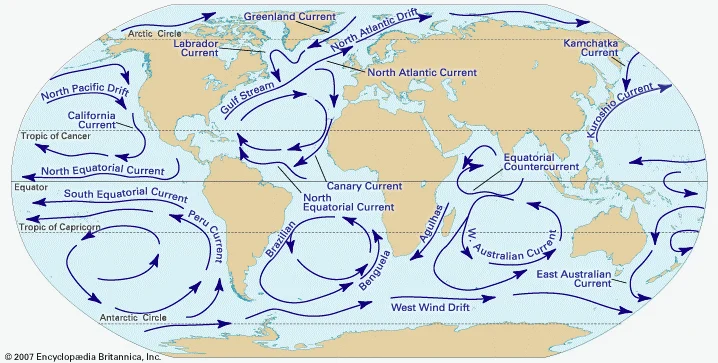For Cadets, Junior Officers, and Anyone Who Still Asks “Why is the Ship Drifting?”
So What Are Ocean Currents, Really?
Imagine rivers inside the sea, but huge, invisible, and slow-moving. That’s what ocean currents are.
They’re basically movements of seawater that flow continuously in one direction. They affect your ship’s course, the speed over ground, and sometimes even your ETA and fuel consumption.
Two Types of Currents You Should Understand
- Surface Currents
Found in the top 300 to 400 metres of the ocean
Caused mainly by wind and Coriolis effect
These are the currents that push your ship sideways (set) and can affect your speed (drift)
- Deep Water Currents
These are found deep down in the ocean
Caused by differences in water temperature and salinity
They affect climate more than navigation, but it’s still useful to know about them
Some Famous Currents (Must-Know for Orals and Real Life)
Gulf Stream – North Atlantic – Warm – flows northeast
Kuroshio – East of Japan – Warm – flows northeast
Canary – Off West Africa – Cold – flows southwest
Benguela – Off southwest Africa – Cold – flows north
Agulhas – East coast of Africa – Warm – flows south
Brazil Current – East South America – Warm – flows south
Humboldt (Peru) Current – West South America – Cold – flows north
How Currents Affect Ship Handling (Especially for the Bridge Team)
Set and Drift: Your DR position vs. your actual position on GPS shows how the current has affected you
Pilot Boarding: Current affects the approach angle and speed of the vessel
Anchoring: Current can cause the ship to swing in an unusual pattern
Berthing/Unberthing: A strong current can push the vessel off the berth or make turning difficult
Fuel Consumption: Sailing against the current increases fuel burn
Set vs. Drift – Don’t Confuse the Two
Set is the direction the current is pushing your ship (in degrees true).
Drift is the speed at which the current is pushing your ship (in knots).
Simple Tip: “Set is the way you’re being pushed. Drift is how fast you’re being pushed.”
How to Notice and Calculate Current Onboard
Compare Speed Over Ground (SOG) from GPS with Speed Through Water (STW) from the Doppler log
Plot your DR and Fix positions – the line between them shows the set and drift
Observe how buoys and ropes behave, they lean with the current
Use ECDIS overlays and Admiralty publications that show expected ocean current data
For Cadets Specifically
Don’t just blindly write “observed current” in your Training Record Book
Watch how officers calculate and plot the set and drift – learn from them
Try to record real examples in your TRB, not just textbook cases
For Junior Officers
Always factor in current when deciding on a safe speed
Mention current during the Master/Pilot information exchange
Adjust ETA and planned speed if your leg is against a strong current
In the End…
Currents are not just theory from college – they’re a part of real-life seamanship.
Whether you’re a cadet doing TRB entries or a chief officer planning passage, understanding ocean currents makes you a more effective and safer mariner.
Fair winds and a favourable set



